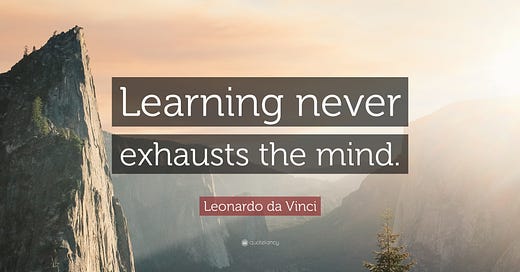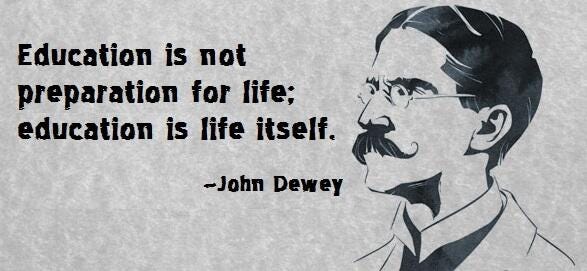Navigating the intricate landscape of education, our pursuit of excellence extends far beyond traditional classrooms, resonating through the diverse domains of life. This guide is a comprehensive exploration into crafting a vibrant educational ecosystem that meticulously addresses diverse learning needs across age groups, reaching beyond school walls into homes, playgrounds, and beyond. Our goal is to delve into practical strategies, accompanied by real-world examples, fostering a wholistic approach to thriving learning environments.
At the core of a thriving learning environment is a dedication that goes beyond conventional educational approaches. It is about nurturing spaces where knowledge is not just shared but explored. This dynamic environment ignites curiosity and encourages deep thought, embracing diversity and inclusivity. Here, every learner is valued and encouraged to thrive on their learning journey.
Imagine a thriving learning environment that encourages interactive and student-centred teaching experiences. Strategies such as hands-on learning not only enhance understanding but also instil analytical skills and nurture creativity. This dynamic approach empowers learners to explore their interests and passions, cultivating a passion for lifelong learning.
Empowerment knows no age limits. From childhood to adulthood, the focus is on equipping individuals with essential skills and values beyond acquiring information. Educators play a crucial role by implementing differentiated instruction, tailoring teaching methods to diverse learning styles, and ensuring every student has an opportunity to thrive. Mentorship programmes further create a supportive network, fostering a culture of continuous improvement.
In this collaborative effort, educators emerge not only as leaders within the classroom but as effective mentors guiding and shaping the broader narrative of a learner's life. Nurturing purpose in education extends beyond academics, creating a supportive community that transcends traditional school boundaries.
Continuous Professional Development stands out as a key strategy in this endeavour. Encouraging educators to participate in such programmes, attend workshops, and collaborate with professionals from other fields ensures they stay abreast of the ever-evolving educational landscape. This continuous growth equips them to address the diverse needs of learners at different stages of their learning journey.
The foundations of a thriving learning environment rely on collaboration and teamwork. Encouraging educators to form connections, share best practices, and explore innovative teaching strategies elevates the quality of education, fostering camaraderie, mutual support, and a growth mindset among educators.
Recognition of diverse roles within a school is crucial, but the wholistic approach acknowledges that the impact extends far beyond those confines. Teachers, mentors, leaders, and parents all contribute to a positive culture for all learners. Involving parents in school activities and decision-making processes fosters a sense of community and shared responsibility. Open communication channels, such as regular parent-teacher meetings, create a supportive environment where parents actively partner in their child's educational journey.
Creating a thriving learning environment isn't confined to the school domain. Administrators, with their policy-shaping prowess and resources that facilitate learning, contribute to the broader ecosystem. Importantly, families and parents form the foundation of support, not only within the home but extending their influence to other spheres of a child's life. Acknowledging the significance of these principles envisions a wholistic learning environment that permeates all aspects of a child's development.
The journey towards a thriving learning environment is a collaborative effort involving various contributors, including educators, parents, family members, and others who contribute to a student's learning journey. A thriving learning environment is essential for wholistic development, and here are strategies for everyone involved:
Nurturing a Collective Vision
Promote active participation in professional development sessions to nurture a collective dedication to educational research and best practices. Collaborate on curriculum development, coordinate stress-management activities for emotional well-being, and champion shared values and objectives, fostering a culture of continuous learning and improvement.
Embracing Diversity and Inclusion
Engage in continuous professional development focused on diversity and inclusion. Explore diverse perspectives, incorporate multicultural literature, and establish a safe space for open dialogue on sensitive topics. Encourage self-reflection among all contributors regarding biases and assumptions, fostering a culture of inclusivity and respect for differences.
Cultivating a Culture of Communication and Collaboration
Provide access to resources and educational technologies, fostering innovative teaching methods. Create an empathetic environment where everyone feels valued. Promote collaboration through teamwork, shared best practices, and collaborative planning. Establish an open-door policy, encouraging questions, concerns, and ideas.
Leveraging Technology for Learning
Engage in professional development aimed at technology integration, fostering deep analysis and responsible technology utilisation. Cultivate a secure online environment, encourage collaborative virtual work, and remain updated on the latest technological advancements to enhance engagement.
Nurturing Creativity and Innovation
Encourage reflective exploration through open-ended questions. Provide opportunities for professional development and continuous learning. Create a safe space for expressing creativity through various mediums. Cultivate a supportive environment for sharing unique ideas and opinions.
Cross-Pollination of Knowledge
Promote collaboration among individuals from different domains. Integrate knowledge from various fields through projects and activities. Facilitate collaborative projects or team-teaching opportunities. Incorporate movement breaks and physical activities for a wholistic learning experience.
A Wholistic Approach to Assessment
Implement varied assessment methods focusing on wholistic growth. Embrace formative assessment practices and consider individual needs during assessments. Promote collaborative learning experiences and encourage self-assessment and reflection.
Cultivating an Aesthetic Mindset
Encourage self-expression through creative activities. Incorporate hands-on learning approaches and thoughtfully designed learning spaces. Promote peer-to-peer interaction and discussion. Integrate themes of resilience, empathy, and compassion into the curriculum to enrich the learning experience wholistically.
Fostering a Growth Mindset
Support the exploration of new teaching methods and technologies. Create roadmaps for learning goals, celebrate achievements, and provide feedback focused on effort and improvement, fostering the development of self-directed learners.
Nurturing Responsible Education
Embrace continual learning and reflection to refine teaching practices, while fostering positive connections, resilience, and well-being. Promote empathy, diversity, and active community involvement for a wholistic approach to responsible education.
Making Informed Choices
Encourage ongoing learning and reflection while providing resources for well-being and collaboration. Foster a culture of appreciation for efforts and celebration of achievements. Encourage self-awareness and growth to enable informed decision-making.
Infusing Joy into Learning
Provide support, mentoring, and ergonomic workspaces. Celebrate achievements, foster a vibrant ambiance, and encourage humour and playfulness to enrich the learning environment.
In essence, the journey towards a thriving learning environment transcends conventional boundaries and encompasses a commitment to continuous learning, collaboration, and holistic growth. It is a collaborative effort involving educators, parents, and the community at large, aimed at nurturing individuals who are not only academically proficient but also resilient, empathetic, and equipped with essential life skills. By fostering a culture of continuous improvement, celebrating achievements, and prioritising wholistic development, paving the way for actualising the full potential of every learner, enabling them to thrive and contribute meaningfully to society.





